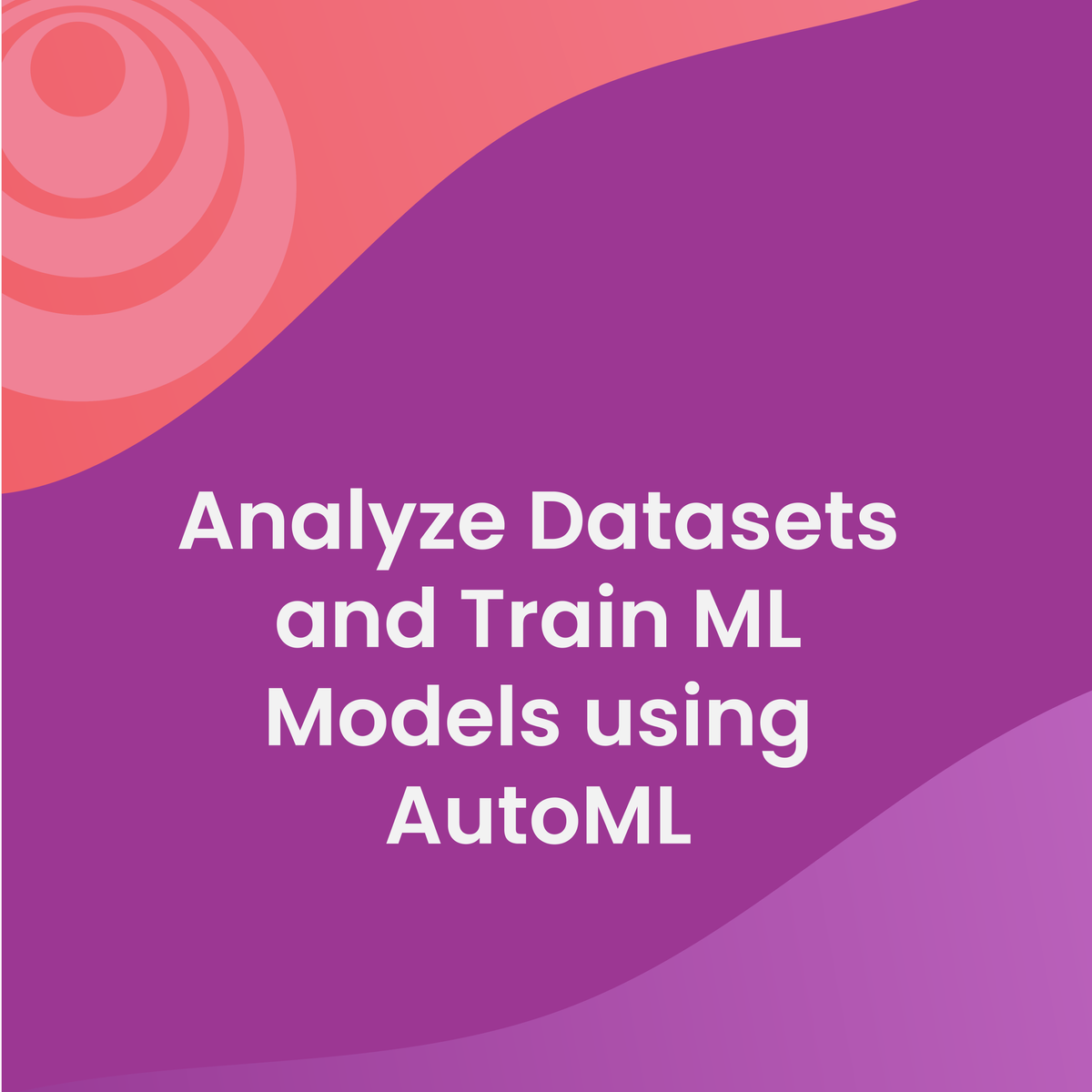Back to Courses









Computer Science Courses - Page 154
Showing results 1531-1540 of 2309

Test your Django views and forms using Selenium
In this 2-hour long project-based course, you will learn how Selenium can be integrated with your Django project. Selenium is quite fun to learn and use: it can make your python program pretend it is an actual user browsing a website, so it is ideal for testing web application. You will use Selenium to test various aspects of a sample Django project. After understanding how the sample project works, your will write Selenium test functions to test the views of the project apps. In particular, you will learn how to test the presence of certain strings in a web page, the presence of form elements, whether a link successfully navigates to the right page, and whether a form is successfully submitted.
Note: This course works best for learners who are based in the North America region. We’re currently working on providing the same experience in other regions.

Agile Meets Design Thinking
Despite everyone's good intentions, hard work and solid ideas, too many teams end up creating products that no one wants, no one can use, and no one buys. But it doesn't have to be this way. Agile and design thinking offer a different--and effective--approach to product development, one that results in valuable solutions to meaningful problems. In this course, you’ll learn how to determine what's valuable to a user early in the process--to frontload value--by focusing your team on testable narratives about the user and creating a strong shared perspective.
This course is supported by the Batten Institute at UVA’s Darden School of Business. The Batten Institute’s mission is to improve the world through entrepreneurship and innovation: www.batteninstitute.org.

Tables and Forms in HTML
In this project, you will write the HTML code to incorporate tables and forms into a web page. You will use a text editor called Notepad++ to write your code, and the Chrome browser to display the resulting web page. HTML tables are used to organize and present data in a tabular format, making it easier to read for the web page visitor. Tables are also used to position items on a web page. Adding a simple form to the web page provides a method of interacting with visitors. By the end of the course, you will have created a web page that includes a table that displays and positions organized data, images, and a form.
Note: This course works best for learners who are based in the North America region. We’re currently working on providing the same experience in other regions.

Make Continuous Improvements with Retrospective Maps in Miro
By the end of this project, you will be able to lead and document a project retrospective to explore lessons learned and identify areas for continuous improvements.
To do this, you will gain hands-on experience working in the Miro online visual collaboration platform for teamwork while you identify key players and questions that are likely to produce insights leading to work process and outcome improvements.
Note: This course works best for learners who are based in the North America region. We’re currently working on providing the same experience in other regions.

Conduct a 5 Whys Analysis in Miro
By the end of this project, you will be able to conduct a 5 Whys Analysis to engage in a focused discussion to uncover why a problem exists, identify the core issue that can be addressed, and arrive at possible solutions.
To do this, you will gain hands-on experience applying the 5 Whys brainstorming strategies while you visualize the results in the Miro online visual collaboration platform for teamwork.
Note: This course works best for learners who are based in the North America region. We’re currently working on providing the same experience in other regions.

Create an Animation for a Social Media Icon using Adobe Illustrator
By the end of this project, you will be able to create an animation for a social media icon using Adobe Illustrator and an online GIF maker.
Throughout the project, you will be able to use Adobe Illustrator with its different tools. You will be able to create the frames for the animation of the social media icon. You will be exposed to the concept of Artboards in Adobe Illustrator as well as how to export those Artboards as files and use them in other software or online applications.
This guided project is for intermediate designers and intermediate animators who are interested in learning how to create the frames for their animations in Adobe Illustrator. Using the tools in Adobe Illustrator, you will be able to create the frames needed to animate the social media icon. By creating this animation you will contribute to completing the visual branding of your website or mobile application. It will add a dynamic edge to your social media icons and hence achieve an interactive visual experience.
It is always an interesting addition when you include animation as part of your visual identity and this project will help you achieve that.
Adobe Illustrator is the most used software to create vectorial designs. It will be, undoubtedly, a great asset throughout your future career as a designer.

Identifying Security Vulnerabilities
This course will help you build a foundation of some of the fundamental concepts in secure programming. We will learn about the concepts of threat modeling and cryptography and you'll be able to start to create threat models, and think critically about the threat models created by other people. We'll learn the basics of applying cryptography, such as encryption and secure hashing. We'll learn how attackers can exploit application vulnerabilities through the improper handling user-controlled data. We'll gain a fundamental understanding of injection problems in web applications, including the three most common types of injection problems: SQL injection, cross-site scripting, and command injection.
We'll also cover application authentication and session management where authentication is a major component of a secure web application and session management is the other side of the same coin, since the authenticated state of user requests need to be properly handled and run as one session. We'll learn about sensitive data exposure issues and how you can help protect your customer's data. We'll cover how to effectively store password-related information, and not to store the actual plaintext passwords. We'll participate in coding assignment that will help you to better understand the mechanisms for effectively storing password-related information.
Along the way, we’ll discuss ways of watching out for and mitigating these issues and be able have some fun and exploit two different vulnerabilities in a web application that was designed to be vulnerable, called WebGoat.

Design social media content with Piktochart
At the end of this project, you will have all the basic skills to create content for your social media account with Piktochart, which is a software and online tool for creating and editing Marketing visuals of all kinds. You will be able to discover in detail the different features of the platform, and will be able to use its tools to create social media content.
This project is for beginners, people who have never used Piktochart to create content for their social networks. It is ideal for those who would like to use Piktochart for their professional projects.

Fashion Image Classification using CNNs in Pytorch
In this 1-hour long project-based course, you will learn how to create Neural Networks in the Deep Learning Framework PyTorch. We will creating a Convolutional Neural Network for a 10 Class Image Classification problem which can be extended to more classes. We will start off by looking at how perform data preparation and Augmentation in Pytorch.
We will be building a Neural Network in Pytorch. We will add the Convolutional Layers as well as Linear Layers. We will then look at how to add optimizer and train the model. Finally, we will test and evaluate our model on test data.
The project will get you introduced with Pytorch. You will in the end understand how the framework works and get you started with building Neural Networks in Pytorch.
Note: This course works best for learners who are based in the North America region. We’re currently working on providing the same experience in other regions.

Analyze Datasets and Train ML Models using AutoML
In the first course of the Practical Data Science Specialization, you will learn foundational concepts for exploratory data analysis (EDA), automated machine learning (AutoML), and text classification algorithms. With Amazon SageMaker Clarify and Amazon SageMaker Data Wrangler, you will analyze a dataset for statistical bias, transform the dataset into machine-readable features, and select the most important features to train a multi-class text classifier. You will then perform automated machine learning (AutoML) to automatically train, tune, and deploy the best text-classification algorithm for the given dataset using Amazon SageMaker Autopilot. Next, you will work with Amazon SageMaker BlazingText, a highly optimized and scalable implementation of the popular FastText algorithm, to train a text classifier with very little code.
Practical data science is geared towards handling massive datasets that do not fit in your local hardware and could originate from multiple sources. One of the biggest benefits of developing and running data science projects in the cloud is the agility and elasticity that the cloud offers to scale up and out at a minimum cost.
The Practical Data Science Specialization helps you develop the practical skills to effectively deploy your data science projects and overcome challenges at each step of the ML workflow using Amazon SageMaker. This Specialization is designed for data-focused developers, scientists, and analysts familiar with the Python and SQL programming languages and want to learn how to build, train, and deploy scalable, end-to-end ML pipelines - both automated and human-in-the-loop - in the AWS cloud.
